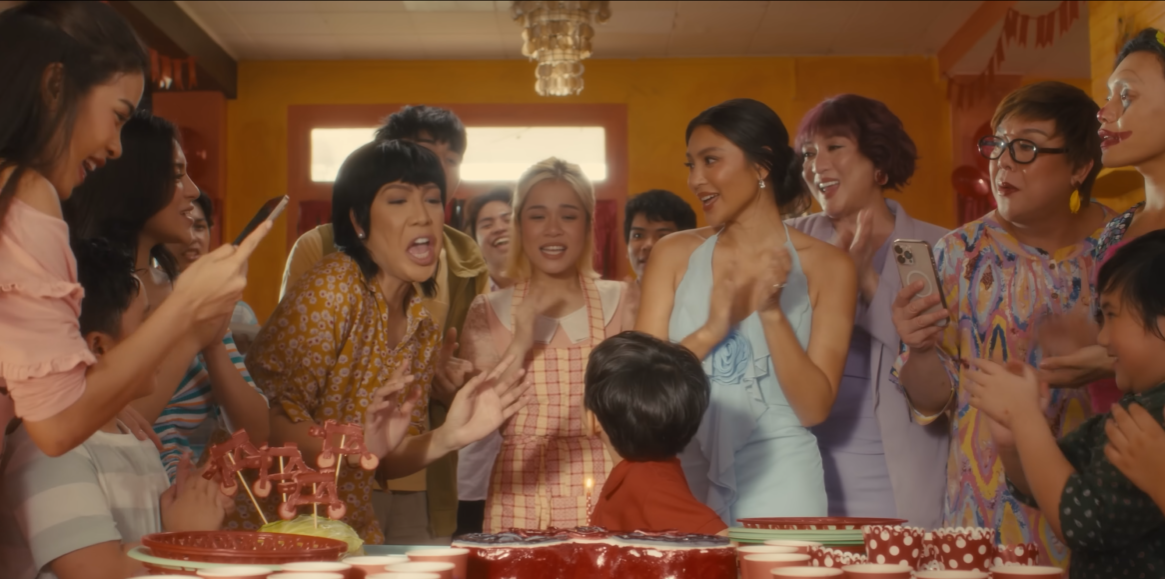‘The Batman’ REVIEW: A neo-noir mystery that deconstructs a tortured hero
‘The Batman’ REVIEW: A neo-noir mystery that deconstructs a tortured hero
Robert Pattinson stars as Batman in a serial killer crime film.
The Batman begins unlike most superhero films.
We're thrust into the point-of-view of someone looking through binoculars to spy on a powerful political figure. No context is provided, it’s plain voyeurism and foreboding all at once. What immediately comes to mind is the eerie suspense of Rear Window or Jake Gittes' own binocular surveillance in Chinatown.
Shortly after, we’re introduced to an unhinged and demented Riddler (played maniacally by Paul Dano, who is not a stranger to psychotic performances, i.e., Prisoners) in one of the most chilling Batman scenes to date. Later on, a narration is heard from a rugged and tempest-tossed voice that seems familiar yet nothing like we’ve heard before.
It’s the Caped Crusader we’ve known for many years (played with care and vindictiveness by Robert Pattinson), but there’s a gruffness to his cadence and a timbre of anxiety that places him closer to a neo-noir protagonist than a crime-fighting hero.
The poster for The Batman, exclusively playing in cinemas.
The femme fatale, Selina Kyle, a.k.a. Catwoman (played by the wonderful Zoe Kravitz), acts as both ally and foil to the bat while wrestling with her own demons. Both leads have a more than satisfying rapport together, but the film glosses over the part where their professional relationship becomes a more intimate one (Also like noir, which usually fast-tracks this part).
Oswald Cobblepot (played by Colin Farrell in near-indistinguishable makeup), the gentlemanly club owner and friend of mobsters better known as Penguin, is plucked straight from the bat's colorful rogues gallery. Alongside him is Carmine Falcone (played by the raffish John Turturro), the infamous crime boss who has a stranglehold on every nook and cranny of Gotham City’s political systems.
These noir elements certainly belong to a Batman film, but they play out in numerous genres to create a grimy and desolate environment that inhales fear and exhales vengeance. Despite the disparity in genre interests, director Matt Reeves strikes a worthy balance. It’s a part-serial killer mystery, part-superhero adventure, and part-crime drama stuffed in a 3-hour runtime that can feel loaded but never dull.
A still from The Batman
Gone are the otherworldly features, intergalactic warlords, and flying mosquito aliens. The Batman harshly rips off the bandaid, and in its place are spreads of duct tape along with their uneven textures and angular divides. It’s grounded in realism but leveled with sharp reds and oranges as well as harsh shadows that viciously saturate the screen. It’s a beautiful-looking film and, without a doubt, the most visually arresting Batman film to date.
The mystery simmering underneath the dark underbelly of Gotham centers on cryptic messages and methodical murders. James Gordon (played by Jeffrey Wright) coalesces with Batman, who gets to do some detective work this time, to solve riddles aimed at exposing the city's secret corruption à la The Court of Owls.
Since this is the Dark Knight’s second year, there’s a palpable familiarity between him and the lieutenant, instantly apparent in their illicit sleuthing. Alfred Pennyworth (played by an underrated Andy Serkis) involves himself in code-cracking to a very convenient degree. Most of the riddles hardly pose a challenge, and the hurdles encountered can be chalked up to a lack of prudence.
The Riddler with his victim — and duct tape.
Where the film’s most engaging conceit lies is in its deconstruction of Bruce Wayne and the wealthy elite who have stockpiled bribery, plunder, and depravity at the expense of the innocent. Batman’s position of privilege is challenged without the need for snarling jokes and profligate flourishes of womanizing. For once, we're invited to consider the cognitive dissonance inherent in a crime-fighting vigilante who, by virtue of his Wayne identity, is also inadvertently fostering a cesspool of criminality.
Bruce is forced to confront his previous suffering in comparison to those of other orphans who did not have the luxury of living in a gaudy mansion or the advantage of inheritance. This, in my mind, is where the more interesting ideological battle occurs. It’s nowhere to be seen in the spectacle of deciphering puzzles and in the admittedly thrilling chase sequences.
Interestingly, Batman is more prominent than Mr. Wayne for a majority of the runtime. Pattinson plays the famed hero with immense physicality, honing in on the obsessive nature of the character and the dexterity of a neophyte vigilante. His suit looks ragged and threadbare, and the weight of his boots can be felt in each step. Even the chassis of his Batmobile is more concerned with brute force than gothic aesthetics.
A car chase involving the new Batmobile.
Michael Giacchino's score forgoes Elfman's macabre elements and Zimmer's gritty tones. Instead, he lays bare Batman's fragile and volatile ethos. The music begins with a quiet rumble that builds into an uncontrollable rage that brazenly announces the arrival of a larger-than-life figure worthy of mythological epithets.
This Batman isn’t like Affleck’s version that feigned any regard for human life, nor is it like Bale’s more disciplined but vulnerable interpretation. This incarnation is more declaratory and brash. He wants his prey to know that he’s coming with his loud boots and blaring turbine jet engines. When criminals look at empty shadows, he wants to strike fear in just the thought of him being there.
Yet, none of these indicate superiority, they suggest inexperience and instability. These bold exclamations are attempts at hiding the scared little child underneath the mask.
Batman is still confused and uncertain, not because of external factors, but because he’s unsure of himself, unsure of what he’s fighting for, and unsure of what he’s about to become. Gotham needs him, but he still hasn’t taken the step to believe that he is what Gotham deserves.
However, more could’ve been gleaned from this internal conflict. Bruce rarely confronts the facilities of justice in Gotham aside from Gordon, and none of the riddles become a gauntlet of conflict for Batman and his moral code. The inclusion of Bella Reál (played by Jayme Lawson) feels like an afterthought, and the stakes involving the riddles have no real urgency except for a nail-biting funeral scene.
Ultimately, The Batman illustrates that going back to the basics and delving into a more fractious character phase can be rewarding storytelling. The bat works best when he is separate from all the noise and responsibilities of connecting universes. Moving forward, Pattinson's Batman is a blank canvas eagerly waiting to be painted.
‘The Batman’ is now showing in Philippine cinemas.















